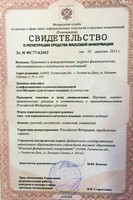ИНТЕРСЕКЦИОНАЛЬНОСТЬ И НЕОПРЕДЕЛЕННАЯ ПОЗИЦИЯ ЗРИТЕЛЯ
Аннотация
В статье анализируется интерсекциональность (конститутивная взаимосвязь социально значимых категорий) как дискурсивная организация структур фильма, с помощью которых производится идентификация зрителей с персонажами на экране, а также как аналитический фокус на самих структурах идентификации. Кино работает с интерсекциональностью, но социологические модели не подходят для анализа фильмов, для которых, к примеру, важна жанровая логика, не учитываемая теориями интерсекциональности. Кино имеет также возможность рефлектировать саму интерсекциональность, производя неопределенную позицию зрителя, которую я предлагаю именовать квир-удовольствием. На примере триллера «Жестокая игра» (1992) Нила Джордана описывается, как жанровое кино, несмотря на свои традиционные стереотипные структуры, обладает эстетическими возможностями для дестабилизации «мужского» вгляда и гетеронормативной идентичности зрителей. Центральной является эпистемологическая неопределенность, производимая переворачиванием интерсекциональных взаимосвязей и несоответствием нарративного и визуального рядов, что заставляет зрителя сомневаться в увиденом и подвергать его постоянной ревизии, тем не менее не нарушая жанровой логики. Таким образом, этому фильму удается связать политический конфликт со структурами желания и идентификаций зрителей. Данный анализ предпринимается для переосмысления знаменитых тезисов Л. Малви о потенциале жанрового кино и для дополнения их при помощи аналитического фокуса на структурах интерсекциональности.
Ключевые слова: интерсекциональность, неопределенная позиция зрителя, квир- и гендерные исследования, «Жестокая игра», жанровое кино, квир-удовольствие
Для цитирования: Градинари, И. Интерсекциональность и неопределенная позиция зрителя // Практики и интерпретации: журнал филологических, образовательных и культурных исследований. 2022. Т. 7. № 1. С. 67–84. DOI: 10.18522/2415-8852-2022-1-67-84
Полный текст:
PDFЛитература
Градинари, И. (2014). Техника «косого взгляда». Критика гетеронормативного порядка // Введение в квир-исследования / под ред. И. Градинари. М.: Издательство института Гайдара. С. 7–76.
Aaron, M. (Ed.). (2004). New queer cinema. A critical reader. New Brunswick: Rutgers University Press.
Benshoff, H.M., & Griffin, S. (2004). Queer сinema. The film reader. New York: Routledge.
Benshoff, H.M., & Griffin, S. (2010). Queer images. A history of a gay and lesbian film in America. Lanham: Rowman & Littlefield.
Blumenberg, H. (1960). Paradigmen zu einer Metaphorologie. Archiv für Begriffsgeschichte, 6, 5–142.
Bronfen, E. (2004). “You’ve got a great big dollar sign where most women have a heart”. Refiguration der Femme fatale im Film Noir der 1980er- und 1990er-Jahre. In C. Liebrand, & I. Steiner (Eds.). Genre und Gender im zeitgenössischen Mainstream-Film. Marburg: Schüren, 91–135.
Butler, J. (1993). Bodies that matter. On the discursive limits of ‘sex’. New York, London: Routledge.
Creekmur, C.K. & Doty, A. (1995).
Introduction. In C. K. Corey & A. Doty (Eds.), Out in culture. Gay, lesbian, and queer essays on popular culture. Durham, London: Duke University Press.
Crenshaw, K. (1989). Demarginalizing the intersection of race and sex: a black feminist critique of antidiscrimination doctrine, feminist theory and antiracist politics. The University of Chicago Legal Forum, 1, 139– 167.
Crewe, J. (1995). In the field of dreams: transvestism in “Twelfth Night” and “The Crying Game”. Representations, 50, 101–121.
Dyer, R. (1997). White. London: Routledge.
Evans, N. (1998). Games of hide and seek: race, gender and drag in “The Crying Game” and “The Birdcage”. Text and Performance Quarterly, 18, 199–216.
Gradinari, I. & Pause, J. (2018). Medialisierungen der Macht. Zur Gegenwart des politischen Kinos. In I. Gradinari, N. Immer, & J. Pause (Eds.), Medialisierungen der Macht. Filmische Inszenierungen politischer Praxis. Paderborn: Wilhelm Fink, 9–30.
Gradinari, I. & Ritzer, I. (2021). Einleitung: Genre und Race – ein zu berücksichtigendes Verhältnis. In I. Gradinari, I. Ritzer (Eds.), Genre und Race. Mediale Interdependenzen von Ästhetik und Politik. Wiesbaden: Springer, 1–23.
Halberstam, J. (2005). In a queer time and place: transgender bodies, subcultural lives. New York: NYU Press.
Handler, K. (1994). Sexing “The Crying Game”. Difference, identity, ethics. Film Quarterly, 47(3), 31–42.
Hilmes, C. (1990). Die Femme fatale. Stuttgart: Metzler.
Kohnen, M. E.S. (2008). The adventures of a repressed farmboy and the billionaire who loves him: queer spectatorship in “Smallville” fandom. In S.M. Ross, & L.E. Stein (Eds.), Teen television: essays on programming and fandom, Jefferson: McFarland, 207–223.
Mulvey, L. (1985). Visual pleasure and narrative cinema. In G. Mast, & M. Cohen (Eds.), Film theory and criticism. Introductory readings (3rd ed.). New York, Oxford: Oxford University Press, 803–816.
Stein, G. (Ed.). (1985). Femme fatale – Vamp – Blaustrumpf, Sexualität und Herrschaft. Kulturfiguren und Sozialcharaktere des 19. und 20. Jahrhunderts. Frankfurt a. M.: Fischer, 231–234.
Walgenbach, K., Dietze, G., Hornscheidt, L., & Palm, K. (2007). Gender als interdependente Kategorie. Neue Perspektiven auf Intersektionalität, Diversität und Heterogenität. Opladen: Budrich Verlag.
White, P. (1999). unInvited. Classical
Hollywood cinema and lesbian representability. Bloomington: Indiana University Press.
Winker, G., & Degele, N. (2010). Intersektionalität. Zur Analyse sozialer Ungleichheiten. Bielefeld: transcript.
Zizek, S. (1993). From courtly love to “The Crying Game”. New Left Review, I/202, 95–108.
Фильмография
Jordan, N. (1992). The Crying Game [Motion Picture]. United Kindom, Japan: Palace Pictures, Channel Four Films, British Screen, Nippon Film Development.
References
Aaron, M. (Ed.). (2004). New queer cinema. A critical reader. New Brunswick: Rutgers University Press.
Benshoff, H.M., & Griffin, S. (2004). Queer сinema. The film reader. New York: Routledge.
Benshoff, H.M., & Griffin, S. (2010). Queer images. A history of a gay and lesbian film in America. Lanham: Rowman & Littlefield.
Blumenberg, H. (1960). Paradigmen zu einer Metaphorologie [Paradigms for a metaphorology]. Archiv für Begriffsgeschichte [Archive for the history of concepts], 6, 5–142.
Bronfen, E. (2004). “You’ve got a great big dollar sign where most women have a heart”. Refiguration der Femme fatale im Film Noir der 1980er- und 1990er-Jahre. In C. Liebrand, & I. Steiner (Eds.), Genre und Gender im zeitgenössischen Mainstream-Film [Genre and gender in contemporary mainstream film]. Marburg: Schüren, 91–135.
Butler, J. (1993). Bodies that matter. On the discursive limits of ‘sex’. New York, London: Routledge.
Creekmur, C.K., & Doty, A. (1995). Introduction. In C. K. Corey, & A. Doty (Eds.), Out in culture. Gay, lesbian, and queer essays on popular culture. Durham, London: Duke University Press.
Crenshaw, K. (1989). Demarginalizing the intersection of race and sex: a black feminist critique of antidiscrimination doctrine, feminist theory and antiracist politics. The University of Chicago Legal Forum, 1, 139– 167.
Crewe, J. (1995). In the field of dreams: transvestism in “Twelfth Night” and “The Crying Game”. Representations, 50, 101–121.
Dyer, R. (1997). White. London: Routledge.
Evans, N. (1998). Games of hide and seek: race, gender and drag in “The Crying Game” and “The Birdcage”. Text and Performance Quarterly, 18, 199–216.
Gradinari, I., & Pause, J. (2018). Medialisierungen der Macht. Zur Gegenwart des politischen Kinos [Medialisations of power. On the present of political cinema]. In I. Gradinari, N. Immer, & J. Pause (Eds.), Medialisierungen der Macht. Filmische Inszenierungen politischer Praxis [Medialisations of power. Cinematic stagings of political practice]. Paderborn: Wilhelm Fink, 9–30.
Gradinari, I., & Ritzer, I. (2021). Einleitung: Genre und Race – ein zu berücksichtigendes Verhältnis [Introduction: genre and race – a relationship to be considered]. In I. Gradinari, & I. Ritzer (Eds.), Genre und Race. Mediale Interdependenzen von Ästhetik und Politik [Genre and race. Media interdependencies of aesthetics and politics]. Wiesbaden: Springer, 1–23.
Gradinari I. (2014). Vvedeniye v kvirissledovaniya [Introduction to queer studies]. In I. Gradinari (Ed.), Tekhnika «kosogo vzglyada». Kritika geteronormativnogo poryadka [The “oblique eye” technique. A critique of the heteronormative order]. Мoscow: Izdatel’stvo instituta Gaydara, 7–76.
Halberstam, J. (2005). In a queer time and place: transgender bodies, subcultural lives. New York: NYU Press.
Handler, K. (1994). Sexing “The Crying Game”. Difference, identity, ethics. Film Quarterly, 47(3), 31–42.
Hilmes, C. (1990). Die Femme fatale. Stuttgart: Metzler.
Kohnen, M. E.S. (2008). The adventures of a repressed farmboy and the billionaire who loves him: queer spectatorship in “Smallville” fandom. In S.M. Ross, & L.E. Stein (Eds.), Teen television: essays on programming and fandom, Jefferson: McFarland, 207–223.
Mulvey, L. (1985). Visual pleasure and narrative cinema. In G. Mast, & M. Cohen (Eds.), Film theory and criticism. Introductory readings (3rd ed.). New York, Oxford: Oxford University Press, 803–816. Stein, G. (Ed.). (1985). Femme fatale – Vamp – Blaustrumpf, Sexualität und Herrschaft. Kulturfiguren und Sozialcharaktere des 19. und 20. Jahrhunderts [Femme fatale – vamp – bluestocking, sexuality and domination. Cultural figures and social characters of the 19th and 20th Century]. Frankfurt am Main: Fischer, 231–234.
Walgenbach, K., Dietze, G., Hornscheidt, L., & Palm, K. (2007). Gender als interdependente Kategorie. Neue Perspektiven auf Intersektionalität, Diversität und Heterogenität [Gender as an interdependent category. New perspectives on intersectionality, diversity and heterogeneity]. Opladen: Budrich Verlag.
White, P. (1999). unInvited.
Classical Hollywood cinema and lesbian representability. Bloomington: Indiana University Press.
Winker, G., & Degele, N. (2010). Intersektionalität. Zur Analyse sozialer Ungleichheiten [Intersectionality. On the analysis of social inequalities]. Bielefeld: transcript.
Zizek, S. (1993). From courtly love to “The Crying Game”. New Left Review, I/202, 95–108.
Filmography Jordan, N. (1992). The Crying Game [Motion Picture]. United Kindom, Japan: Palace Pictures, Channel Four Films, British Screen, Nippon Film Development.
Ссылки
- На текущий момент ссылки отсутствуют.
(c) 2022 Ирина Градинари
ISSN 2415-8852
Свидетельство о регистрации СМИ Эл № ФС77-62683 от 10 августа 2015 г.
Регистрирующий орган: Федеральная служба по надзору в сфере связи, информационных технологий и массовых коммуникаций (Роскомнадзор)
УЧРЕДИТЕЛЬ: ФГАОУ ВО "Южный федеральный университет".
344006, г. Ростов-на-Дону, ул. Большая Садовая, 105/42,
тел. +7 (863) 218-40-00 E-mail: info@sfedu.ru
Адрес редакции: 344006, г. Ростов-на-Дону, пер. Университетский, 93, к. 8, тел. +7(903) 43-12-321
e-mail: oadzhumaylo@sfedu.ru

Произведения доступны по лицензии
Creative Commons «Attribution» («Атрибуция») 4.0 Всемирная.

